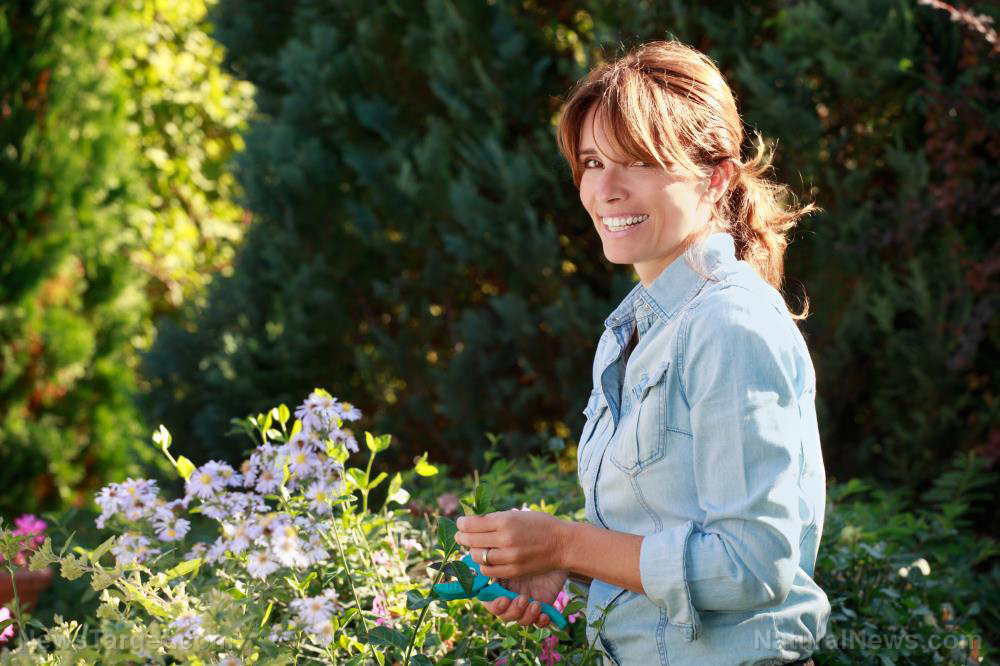Start your fall planting with garlic and tulips
09/29/2018 / By Ralph Flores

It’s that time of year when mornings start becoming a little cooler, and the smell of cinnamon and pumpkin wafts through the air. It can only mean one thing: Fall is upon us – and for gardeners, another great time for planting.
People will never run out of uses for garlic. It’s an essential ingredient in the culinary arts, where it’s added to soups, marinades, stir-fry recipes; used in meat preparations; or even eaten raw. Its health benefits aren’t something to be taken lightly, either — the U.S. National Cancer Institute recognizes garlic for its “potential anti-cancer properties,” and the World Health Organization recommends taking a clove of fresh garlic a day for “general health promotion.”
In this REAL.video, Homestead Homebodies walks us through how to plant garlic and tulip for the fall.
Growing garlic in the fall
In the U.S. and other parts of North America, fall is the perfect time to plant garlic, with October generally being the best month to start. However, those in the far north or higher elevations might start as early as September. Those in the Deep South, as well as in some parts of California, could start planting as late as November. For planting garlic, it’s best to use the biggest cloves.
- Break the cloves apart, but leave the papery husk on.
- Plant them in fertile soil, about 3 inches deep and 4 inches apart.
- Be sure to plant the clove with its “pointy side” up
- You can add composted leaves to enrich the soil – if needed.
- During the cold, mulch the plant well with a layer of straw.
Preparing for spring blooms
Fall planting is also the perfect time to prepare for spring – and nothing welcomes the season than a bloom of spring bulbs after a long, cold winter. Before planting spring bulbs like tulips, it’s best to loosen the soil where they will be placed to ensure they grow well. While most bulb packages come with instructions on how to plant them, as a rule of thumb, it’s best to plant the bulb in a depth that’s at least three times its height. If you’re planning to plant multiple bulbs at once, it’s best to dig a trench then place the bulbs to make it easier. Once you’re done planting the bulbs, place some chicken wire on top of the soil to deter squirrels and other critters. (Related: Now is the Time for Your Fall Garden Plans.)
The power of the elements: Discover Colloidal Silver Mouthwash with quality, natural ingredients like Sangre de Drago sap, black walnut hulls, menthol crystals and more. Zero artificial sweeteners, colors or alcohol. Learn more at the Health Ranger Store and help support this news site.
Some plants to consider for your fall planting include:
- Alliums – For the most part, you can just drop alliums and leave them on their own: It’s a low-maintenance plant that no animal fusses with – plus, it has florets that look like fireworks.
- Bluebells – There are different kinds of bluebells – each beautiful in its own right – but its Spanish and English variants could be planted in partially shaded areas. The flowers of the English bluebell, in particular, grow on only one side of the stalk, causing it to bend under their weight.
- Daffodils – One of the most prominent flowers of spring, daffodils are known to be incredibly easy to grow – needing only a full sun to blooms that can last for generations to come.
- Dutch iris – The bulbs don’t need to be planted too deeply, but it requires well-draining soil. It’s also known to bloom a little later, with some blooming at early summer.
- Fritillaria – The flowers look intimidating, but growing it is the same as any other spring-blooming bulb. However, the bulbs can trigger skin irritation for some people when planted, so it’s best to wear gloves when handling them.
Interested to learn about other plants for fall planting? Follow Harvest.news to find out more.
Sources include:
Tagged Under: autumn, clean foods, fall garden, fall planting, fall season, Fresh, gardening, garlic, harvest, home gardening, Homestead, homesteading, organics, Plants, spring blooms, spring bulb, tulip




















